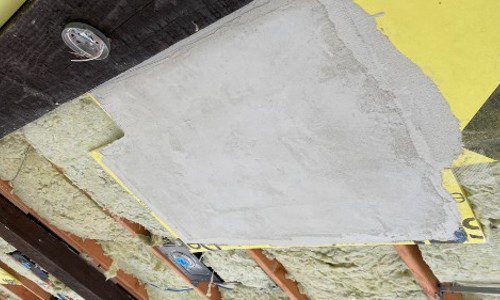Beemer Smart Home, a Seattle-area Home Technology Association certified integrator, has leveraged its relationship with fellow Washington-based Stealth Acoustics for some time and it’s been especially valuable of late to help the company commission unique invisible loudspeaker installations.
Principal Håkan Olsson tells CE Pro that in recent projects coming from architects and builders, the audio portion has involved plaster finishes instead of traditional mudding of walls and ceilings. It can be a tricky environment in which to install invisible speakers without compromising the material or the sound quality. Beemer Smart Home worked directly with vice president Brian Azzano and the Stealth Acoustics team to ensure top results.
“There’s myriad of different types of plasters. Some you paint on top of them, but most use pigment of the plaster itself so there is no paint on top of it. Some are not flexible at all, and some are more flexible,” Olsson explains.
“This triggered us to get into a whole other level of due diligence before we took on the Stealth speaker projects.”
Olsson notes the company has done many traditional Stealth Acoustics invisible speaker implementations, including outfitting his own showroom home, in which he notes best practices include finding a good Sheetrocking installer with skilled personnel to do the mudding.
Beemer Smart Home, Stealth Acoustics Configure Test Wall
When it came to projects involving plaster as Olsson describes in the video above, he says best practices start with the structural integrity, ensuring the plaster does not start cracking because loud music will be played through it.
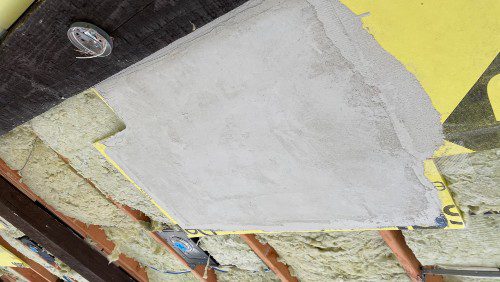
For this, he worked with Azzano, the builder and plaster subcontractor to construct a 5-x-5-foot test segment of a ceiling/wall with a Stealth Acoustics LR6G speaker as well as an LRX-83 with which they tested different application methods and materials before any installation would be done.
“We did a test installation and then ran music through the speaker for four weeks with various types of music to make sure it was structurally sound,” he says.
Among lessons learned to move forward with these and other projects, Olsson found that all plaster needs mesh to adhere to the surface on traditional wall board and that mesh can’t go over the loudspeaker so it needs to be cut out.
“Then it comes down to the plaster that they use at the edge of that surface [where the Stealth speaker meets the wall board] work or not, and in some cases the answer’s yes and in other cases no,” he says of the testing.
Calibration Crucial to Invisible Speakers Install Under Plaster
If it’s yes, as in this case study Olsson describes, the next question becomes, what impact does the plaster have on the sound?
Again using the test board segment, Olsson’s team took measurements over several days before and after plaster was applied to check if frequency response differed, “and it was pretty significant,” he says.
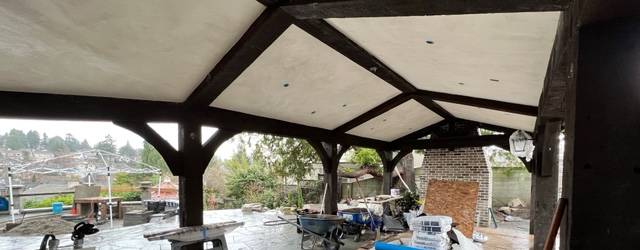
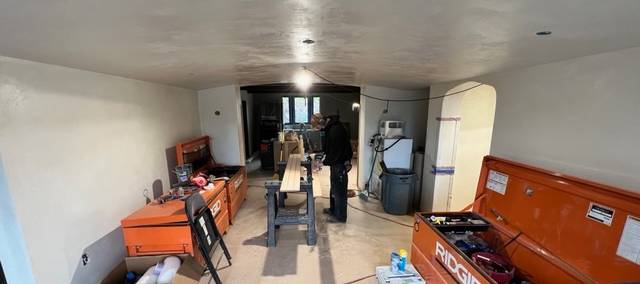
Beemer Smart Home was able to dial in the sound using an AudioControl Director Model D2800 DSP amplifier to be almost identical to the pre-plaster application.
“After that, we concluded [installation is] possible, but in some cases we had to adjust 5dB up to get in line with frequency responses before, and 5dB is kind of the maximum you want to do especially if you don’t want to hurt the speakers because you’re playing loud,” Olsson conveys.
He says EQ and calibration is always done on Stealth installations because the speaker is covered, but more adjustments need to be made for plaster.
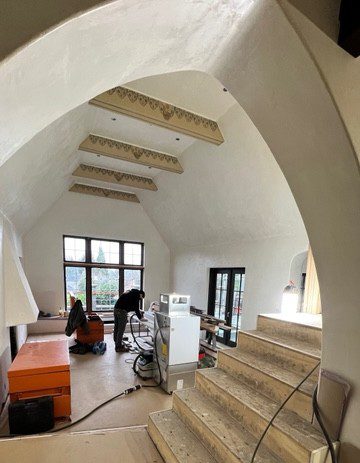
In this project featuring indoor and outdoor distributed audio as well as a Dolby Atmos theater room, Beemer Smart Home employed the same technique to the covered outdoor patio area where six Stealth LRX-83 speakers would be used. In the rest of the home, the integrator installed 28 more LRX-83s plus a mix of LR6G and LRX-83 speakers in the theater (which had traditional mudded ceilings).
In another project, in which plaster would be painted over, the subcontractor used a mix of plaster and mudding over the Stealth Acoustics’ LRX-85 models the customer loved. The result managed to emulate the plaster aesthetic, “which was very labor intensive, but we were able to do it,” Olsson says.
He notes it’s important to have buy-in from all trades – builder, architect, mudding company – on both traditional and unconventional Stealth installations, but especially in cases like using plaster where Olsson says he’s experienced reluctance.
Olsson says being upfront with customers about how material such as plaster will impact sound quality, and ensuring they are pleased with what they hear, is vital as well (though choosing plaster in itself may signify that aesthetics are prioritized over sound quality by clients).
Custom Cabinetry Creates Another Interesting Concealment Project
On another somewhat non-traditional invisible loudspeaker environment project, Beemer Smart Home was referred to by Stealth with a customer who originally sought a handful of speakers for the kitchen and living room area.
After visiting Olsson’s home showroom, the customer ended up getting 16 LRX-83 invisible speakers covering four rooms. Additionally, he wanted LRX-85s for a more serious stereo environment in his living room, as well as a 5.1 invisible system for the open entertainment space – both augmented by a James Loudspeaker PowerPipe subwoofer (that is equally invisible under the subfloor and comes through what looks like a heating vent). Olsson reports that a new firmware update in the AudioControl CM4-750 amp added sufficient flexibility to manage the crossover frequency of the bi-wired LRX-85s and James sub to fully dial that setup in to where “the combination sounds absolutely amazing and … takes the transparency and clarity of the sound to a new level.”
In the 5.1 setup, a wrinkle is that three LRX-83s would be installed into custom cabinetry for left/center/right supplemented by a pair of LRX-83s in the ceiling, Olsson says. Of course, traditional speakers could have been placed there, but this client had his heart set on Stealth’s to match the rest of the house audio.
“It was a lot of collaboration with the cabinet maker to make sure they put the sub-framing inside the cabinet to work with the back boxes and the way you mount a Stealth speaker,” Olsson notes of installation considerations here. “The other aspect was the grilles in front – they need to be designed so they don’t interfere with the sound.”
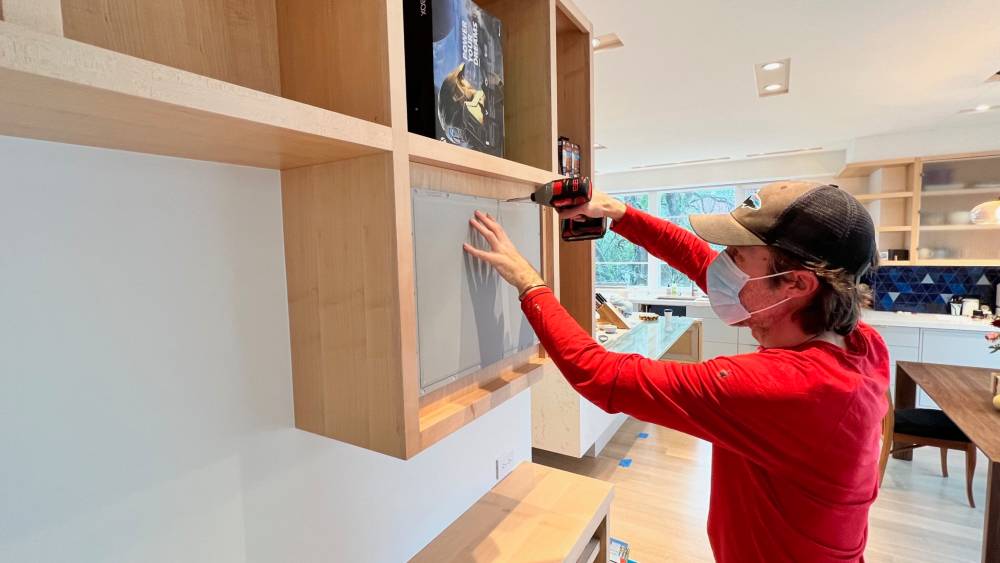
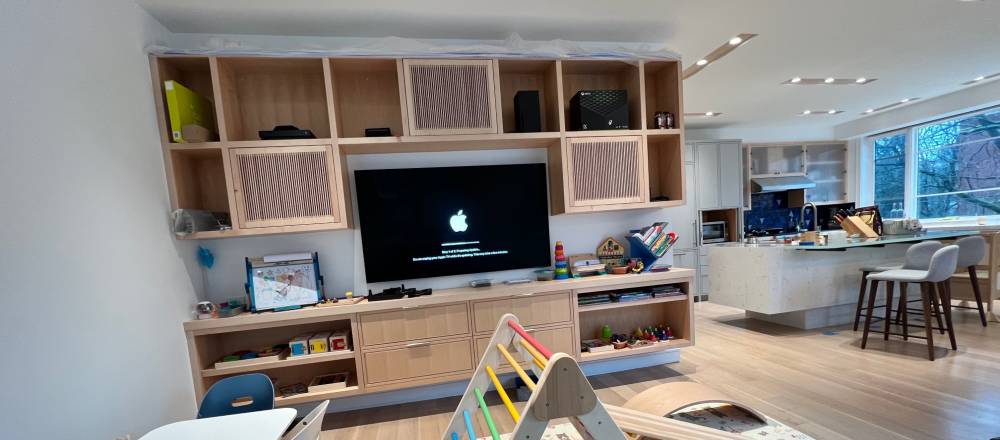
He adds that the customer really appreciates how the sonic characteristics of the audio maintain consistency going from one room into the next, whether music is being piped in through the LRX-83s or LRX-85s.
Similar to the plaster due diligence, in this case Olsson worked with the cabinet maker to bring a grille to the showroom so they could do testing of the sound flow and quality. “The audio was completely seamless through the grille,” he says of the wood grille with vertical cutouts.
He adds that having Azzano and the Stealth team supporting the integrator was key to success with these projects.
“Stealth’s willingness to help figure out solutions – they’re very creative and behind us helping out,” he says.
Hear much more from Olsson about the process for these projects in the full video above.
